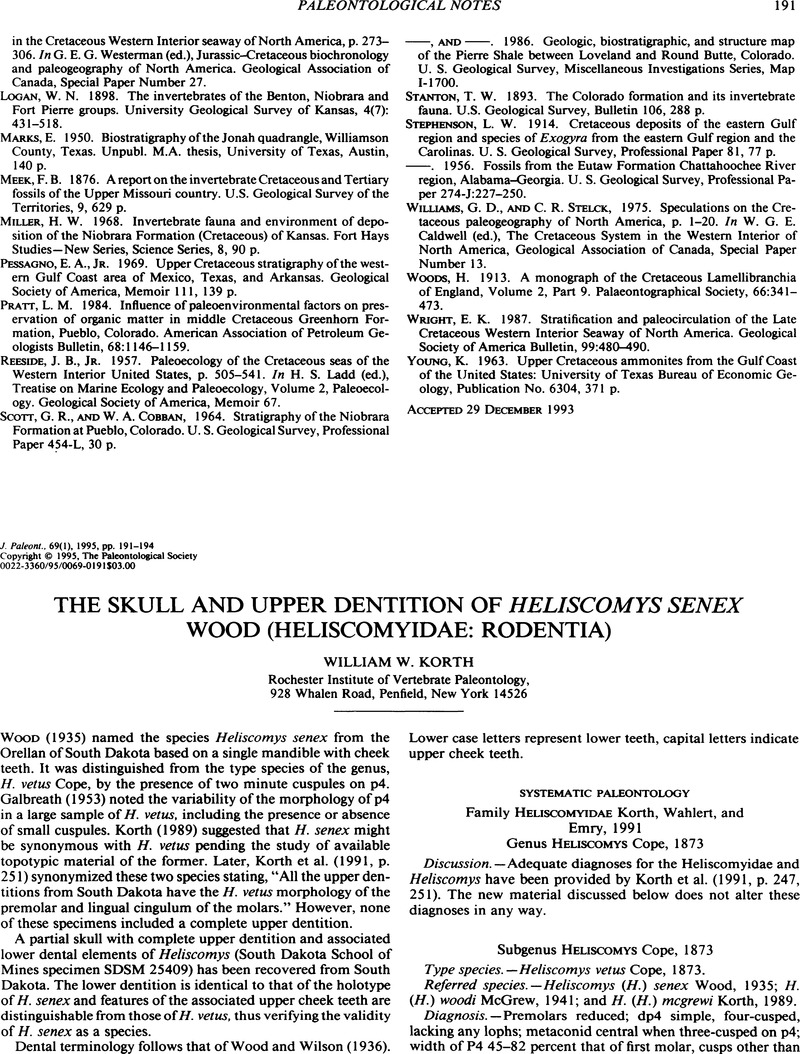Crossref Citations
This article has been cited by the following publications. This list is generated based on data provided by Crossref.
Prothero, Donald R.
and
Heaton, Timothy H.
1996.
Faunal stability during the Early Oligocene climatic crash.
Palaeogeography, Palaeoclimatology, Palaeoecology,
Vol. 127,
Issue. 1-4,
p.
257.
KORTH, WILLIAM W.
and
EATON, JEFFREY G.
2004.
RODENTS AND A MARSUPIAL (MAMMALIA) FROM THE DUCHESNEAN (EOCENE) TURTLE BASIN LOCAL FAUNA, SEVIER PLATEAU, UTAH.
Bulletin of Carnegie Museum of Natural History,
Vol. 36,
Issue. ,
p.
109.
Flynn, Lawrence J.
Lindsay, Everett H.
and
Martin, Robert A.
2008.
Evolution of Tertiary Mammals of North America.
p.
428.
Korth, William W.
and
Tabrum, Alan R.
2017.
A Unique Rodent Fauna from the Whitneyan (Middle Oligocene) of Southwestern Montana.
Annals of Carnegie Museum,
Vol. 84,
Issue. 4,
p.
319.
Korth, William W.
Boyd, Clint A.
and
Person, Jeff J.
2019.
Whitneyan (Middle Oligocene) Rodents from Obritsch Ranch (Stark County, North Dakota) and a Review of Whitneyan Rodent Fossil Record.
Annals of Carnegie Museum,
Vol. 85,
Issue. 3,
p.
249.
Korth, William W.
2019.
Rodents (Mammalia) from the Early Oligocene (Orellan) Cook Ranch Local Fauna of Southwestern Montana.
Annals of Carnegie Museum,
Vol. 85,
Issue. 3,
p.
223.
Calede, Jonathan J.M.
and
Rasmussen, Donald L.
2020.
New Gophers (Rodentia: Geomyidae) from the Cabbage Patch Beds of Montana (Renova Formation) and the Phylogenetic Relationships Within Entoptychinae.
Annals of Carnegie Museum,
Vol. 86,
Issue. 2,
p.
107.
Samuels, Joshua X.
Calede, Jonathan J.-M.
and
Hunt, Jr., Robert M.
2023.
The earliest dipodomyine heteromyid in North America and the phylogenetic relationships of geomorph rodents.
PeerJ,
Vol. 11,
Issue. ,
p.
e14693.



